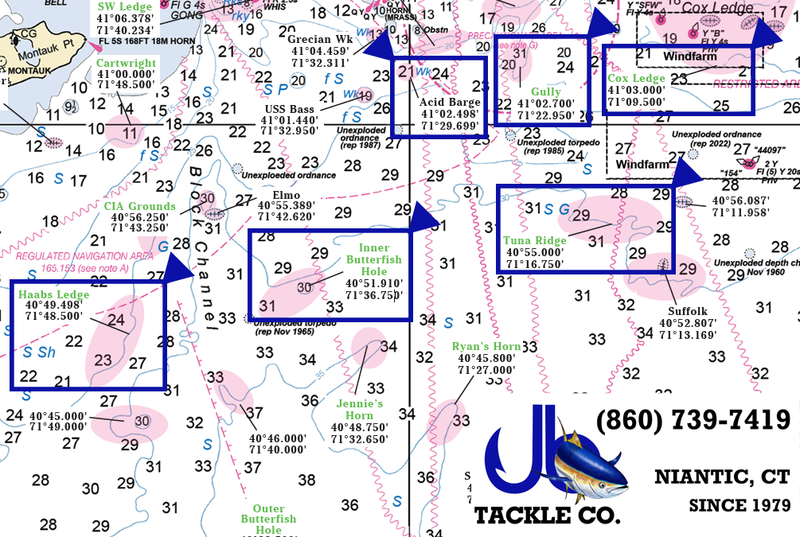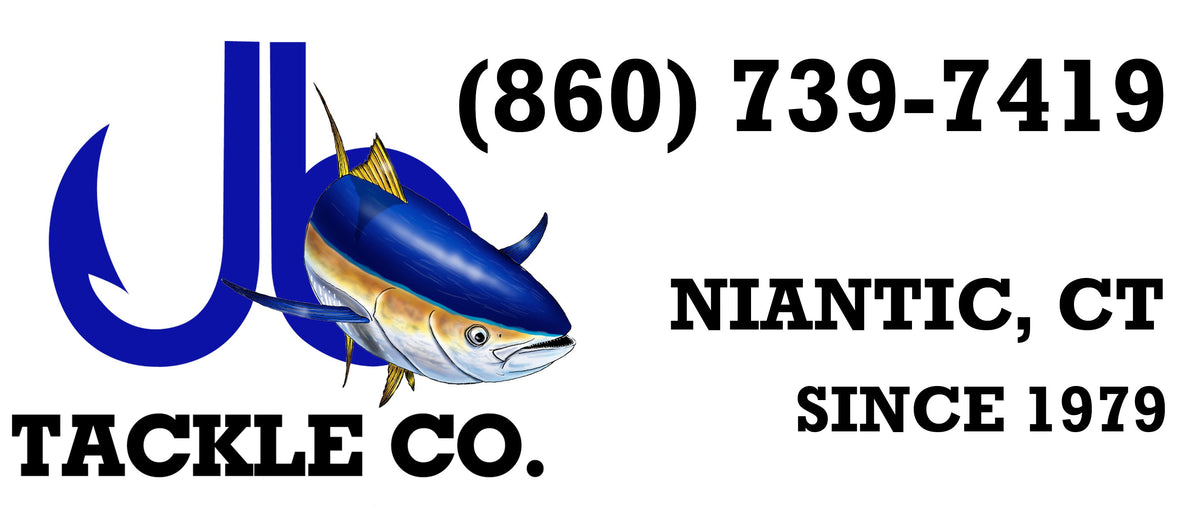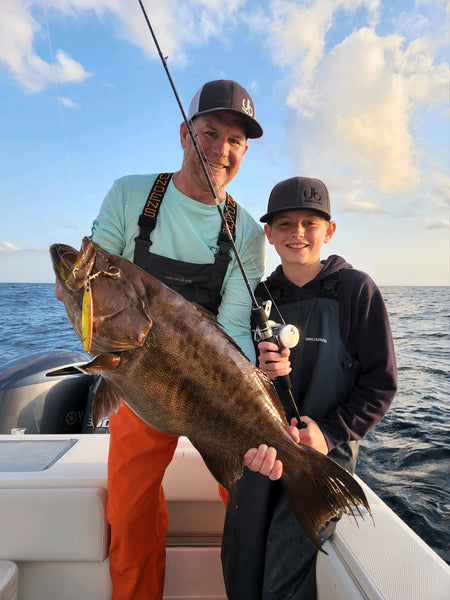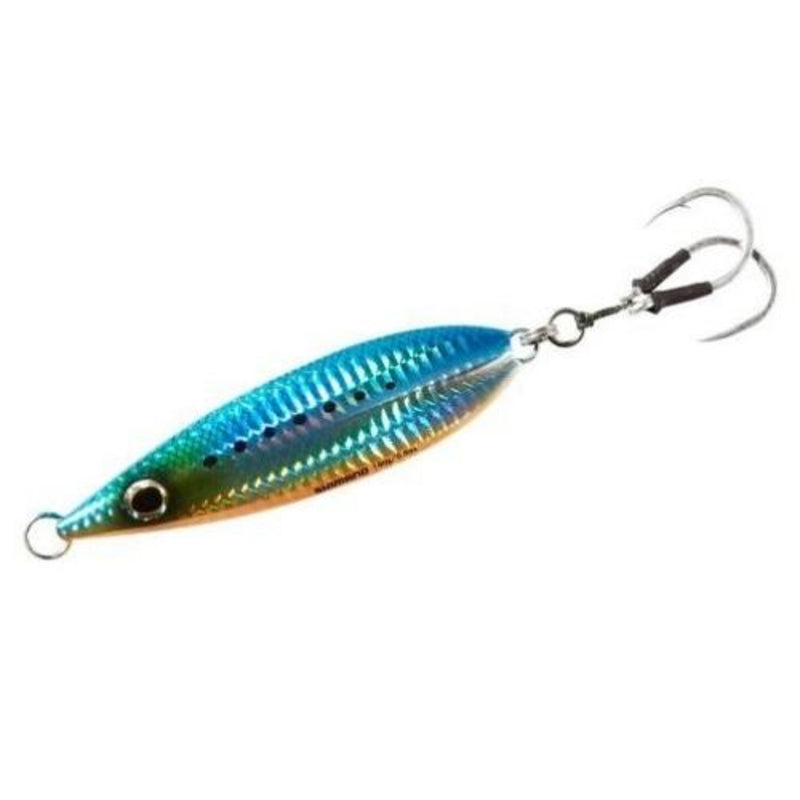
If you’ve been counting down the days until your first real shot at a bluefin, June looks good to start the hunt. Especially if you're launching from the Connecticut shoreline or planning a trip out of Block Island. Tuna have been showing up closer in recent years, and vertical jigging is one of the most effective ways to target them when they’re keyed in on bait down deep.
Whether running a larger center console or pushing the limits of your smaller boat, there are fishable waters and solid tuna marks within range. But knowing where and when to go is everything.
Let’s break it down.
Jigging vs. Trolling: Why Go Vertical?
Don’t want to commit to a full trolling spread? You don’t need to drag half the tackle shop behind the boat to get tight on a tuna. Jigging is a different kind of thrill, you're not just waiting for a rod to pop. You’re actively working the jig, watching the sonar, and feeling every little tick and pause. It's more hands-on, more efficient when fish are stacked mid-column, and it’s a serious rush when that rod doubles over in your hands on a 100-pound bluefin.
And the best part? You don’t have to run 80 miles offshore to get into them. Bluefin were within 10 miles of Block Island at the end of the 2024 season. As the surface temperatures heat up, tuna stay down where the temperature is more consistent. Target deep tuna with jigs for a one-on-one battle you won’t forget.
Tuna Grounds Within Reach
Let’s talk about some of the top spots where Northeast anglers, your fellow boaters from Connecticut, Rhode Island, and even New York, are having the most consistent success jigging for tuna right now.  Map courtesy of Captain Seagull's Charts
Map courtesy of Captain Seagull's Charts
The Acid Barge
Roughly seven miles south of Block Island, the Acid Barge is a tried-and-true haunt for bluefin and mahi during the mid to late summer stretch. Anglers on The Hull Truth report great results here, especially when working simple presentations like cedar plugs and heavy knife jigs around the wreck. This spot holds bait, structure, and predators, and is well within reach for small boats on a good weather day.
Southeast of Coxes Ledge
This dropoff area south and east of Block has a lot of potential. With water ranging from 80 to over 150 feet deep, it’s prime territory for jigging when tuna are holding deep or cruising ledges. Hit it early, or on slack tide when your jigs can actually reach the zone before being swept out by the current.
The Gully
The Gully is one of the closest “hot spots” if you are launching in Rhode Island or leaving out of Block. It stretches from NE to the SW and looks like a skinny canyon on some charts. The steep banks and narrow path make it perfect for mammals to trap bait.
The Habs Ledge
Habs Ledge, the 2024 spot of the season, is just to the SW of Montauk Point. It is almost do west of the Butterfishhole on the 25 fathom curve. Habs is known for holding inshore as well as offshore bait. When the Bluefin or Threshers find themselves looking for Bunker and Sandeels, Habs is a great stop.
Tuna Ridge
Tuna Ridge stretches the 30 fathom curve south of Block Island. The Tuna Ridge section has two ears in the curve that cause bait to get bottled up as it travels along the bank. Just to the south is the Suffolk wreck, and another wreck just to the east. All of this bottom structure is a haven for bait and mammals. The mammals corral the bait, making an easy lunch for schools of Bluefin tuna.
The Butterfish Hole
One of the most famous inshore tuna spots is the Butterfish Hole. It earned its name back in the late 70s and early 80s when large numbers of yellowfin were found there feeding on schools of Butterfish. Or, maybe it was just all the butterfish the boats were chunking up and throwing in the water.
What to Pack in the Jig Bag
Let’s keep this simple: you don’t need an entire wall of gear. You just need a solid setup and the right presentation.
Go with a 5'6" to 6'2" jigging rod rated for 200g–400g jigs. We find most anglers do well with lighter than they would initially think. We like the 300g Jigging World Ghost Hunter or the 350g Shimano Grappler. Match either with a reliable spinning reel—think Shimano Saragosa or Twin Power, Daiwa Saltist MQ, or Saltiga and spool it up with 65-80 lb braid and a 80-100 lb fluoro leader. We like the 14000 size reels the best for South of Montauk and Block Island. If you are headed North to Cape Cod you might want to look at the 18k or 20k sizes.
As for jigs, natural is the name of the game. Bring a mix of knife and flutter jigs in blue/silver, glow, and sand eel patterns. The Shimao Shimmer Fall is one of our most popular, but UTV and JYG jigs are quickly climbing to the top of the list! And don’t overlook soft baits like Ron-Zs. Several anglers swear by them for spinning setups, especially when fish are up high in the column or busting on top. Ron-Z 10” Big Game rigged tails make a deadly “dead stick” bait to leave in the rod holder while you are working a jig.
When to Go and What to Watch for?
Your best chance at jigging for tuna falls between late June and October, with August being the sweet spot. During this time, surface temperatures rise, baitfish cluster mid-column, and tuna become more predictable.
Key indicators to watch for include:
- Sea Surface Temperatures (SST): Target breaks in the 68°F–72°F range.
- Chlorophyll Shifts: Areas transitioning from green to blue water are often feeding zones.
- Signs of Life: Birds, whales, and bait marks on sonar mean you’re in the action zone.
Popular tools like the Rutgers Coastal Ocean Observation Lab and RipCharts can help pinpoint these conditions in real-time.
Tips for Small Boat Tuna Trips
A few forum members made a great point—just because tuna is reachable doesn’t mean every day is go-time. If you’re running an 18–22 foot boat, you’ll want to pick your days carefully. Stick to closer spots like the Acid Barge, Gully or Habs Ledge. Make sure you're stacked on safety gear—EPIRB, VHF, Garmin InReach, a stocked DitchBag—and let someone know your float plan.
The lee side of Block offers some protection if things pick up, and it can still hold fish, especially early or late in the day.



